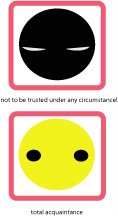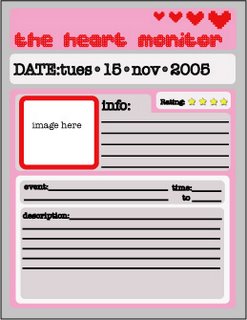Recipes for an Orientation Device Cookbook
OK folks - here's the write-up for the last "orientation device" assignment. In today's class, we'll get a jump on this.
••••
ASSIGNMENT : ORIENTATION DEVICE : Part Four (Final)
Assignment description : Associate Professor Judith Doyle : jdoyle@faculty.ocad.ca
Recipes for an Orientation Device Cookbook
Now we will adapt our ‘orientation device’ ideas into recipes that “users” (amnesics) can prepare or customize for themselves, in collaboration with others (caregivers, computer programmers, artists & designers, family). Altogether, our “recipes” will form an online “cookbook” we will present to our friends at OCAD, the Baycrest Centre, U of T, and others. Your final assignment is to create the recipes and assemble illustrations, pictures, bios, and artists’ statements for this - a “collective memory” of all the project ideas we’ve completed.
Reviewing our past orientation device assignments ( 1 – 3 ) :
• You chose memory impairment problems to address, and tools to solve the problems with. You posted your ideas to the blog.
• You created a set of multimedia “emoticons” (reminders for feelings). You posted your files and wrote about your development for the blog.
• You created a memory map using multimedia signposts from OCAD to nearby destinations. You posted your maps and descriptions on the blog.
For this assignment you will convert your ideas into simple instructions. I will use Tara’s project as an example. She suggested using documentary video clips to trigger memories of friends and of emotions. Her “recipe” might sound like this :
Ingredients :
- a video camera (could be a feature of a cellphone, PDA, web cam or digital camera
- file storage (could be in a computer, online, in a PDA)
• using your camera, shoot short clips of footage of yourself with a friend during everyday activities.
• download files and label with your friend’s name, the place and date
• give the file an emotion’s name (fun, annoying, too noisy, happy)
• index these files so they can be searched by topic, name, date or emotion.
To do : 1) write up one or more of your ‘orientation device’ assignments in the form of a recipe, or “how to” set of instructions. These instructions should help “user-participants” create their own set of emoticons or map of signposts.
2) include a picture of yourself.
3) prepare files of your visuals, MP3s and any other text you’d like to include as an “artist’s statement”.
4) upload to blog. If necessary, bring large files to class on storage media (CD Rom).








